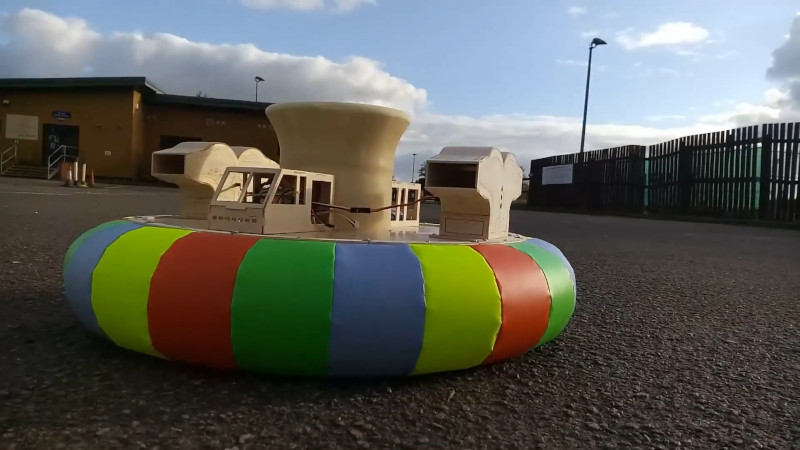Hovercraft never really caught on as regular transportation, but they are very cool. The Saunders-Roe SR.N1 was the very first practical example of the type, and served as a research vehicle to explore the dynamics of such vehicles. [mr_fid] was looking for a lockdown project, and set about crafting a radio controlled replica of his own.
The build is crafted out of a canny combination of plywood and balsa, the latter substituted in sections within the plywood hull to save weight. A pair of brushless outrunner motors are mounted in the central duct to provide lift, fitted with counter-rotating propellers in order to avoid torque effects on handling. Steering is via puff ports a la the original design, which allows the craft to spin very quickly in place to much amusement and no practical effect. The skirt is of a colorful design, carefully assembled out of polyurethane-coated nylon.
While it’s not the quickest way to build a hovercraft, it’s all the more beautiful for its attention to the details and function of the original prototype craft. We particularly like the sharp handling thanks to the puff port design. If you’re looking for a weirder design however, consider this Coanda Effect build. Video after the break.















Neat, but it seems a bit short on eels.
Kuhli Loaches seem to be about the right size, but I don’t think they’d like it very much.
Which is dissapointing, what’s even the point of a hovercraft without eels?
At first glance, I’d say insufficient pressure/flow. The skirt helps with efficiency but this model is dragging it over the surface while “real” world hovercraft are typically 15cm+ above it (which would argue for enough pressure/flow to have the model at least a few mm above the surface and with little or no friction). That said, it’s not easy – I tried this a few times with nitro motors back in the day and it takes a good deal of fussing and duct work to get it to behave at all.
“Hovercraft never really caught on as regular transportation”
Apart, that is, from the services that crossed the English Channel for about 30 years There were six routes with many crossings per day. Speedy too. A hovercraft could cross in as little as 22 minutes compared with a couple of hours for a conventional ferry. I recall there were regular services in other parts of the UK too some of which are still going.
I once crossed the Channel three times in one day by hovercraft and in bad weather too. The mass vomiting had to be seen (and heard and smelt) to be believed.
Yes, you can still catch a hovercraft in the UK. Hovertravel run regular hovercraft flights between Portsmouth and Ryde (every 15 minutes in peak time). The latest two hovercraft in their fleet are Griffon 12000TD, which were delivered in 2016.
Yes, I live 15 minutes walk from the Ryde terminal. The new ones are very nice. You can watch a live stream here.. https://youtu.be/34YMtblpGaE
I think there’s room for the science, if blizzard snowing is going to be a regular thing.